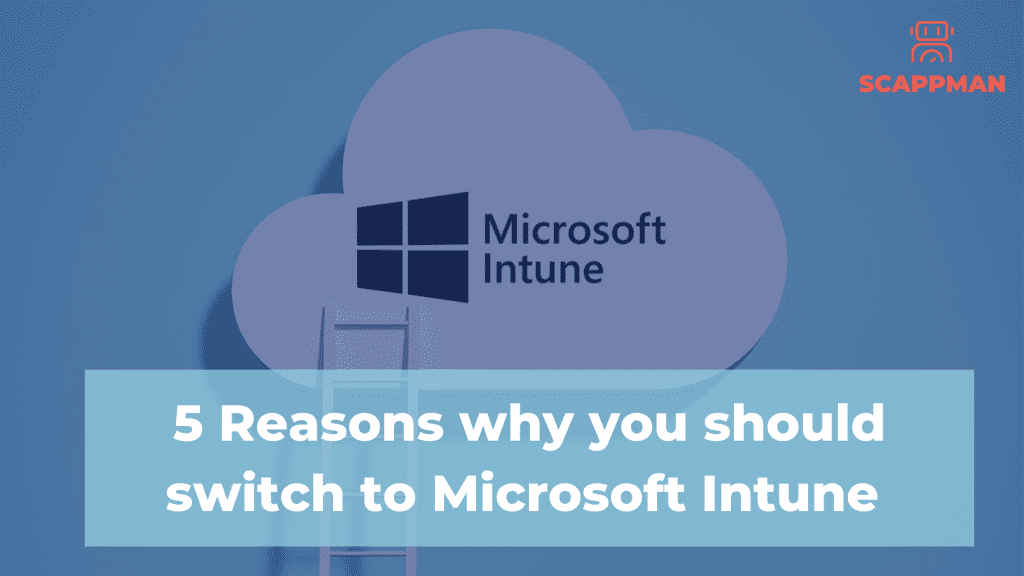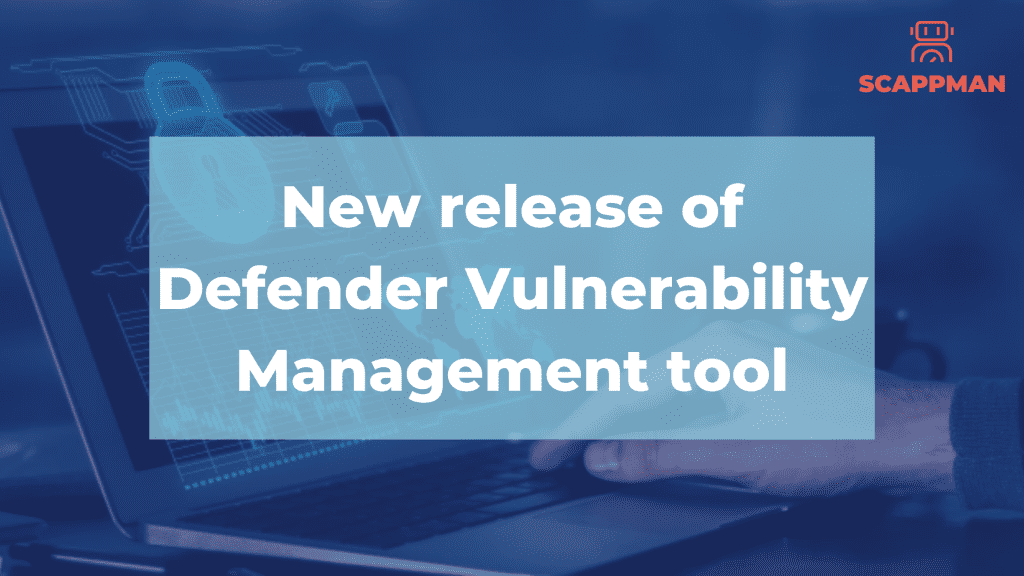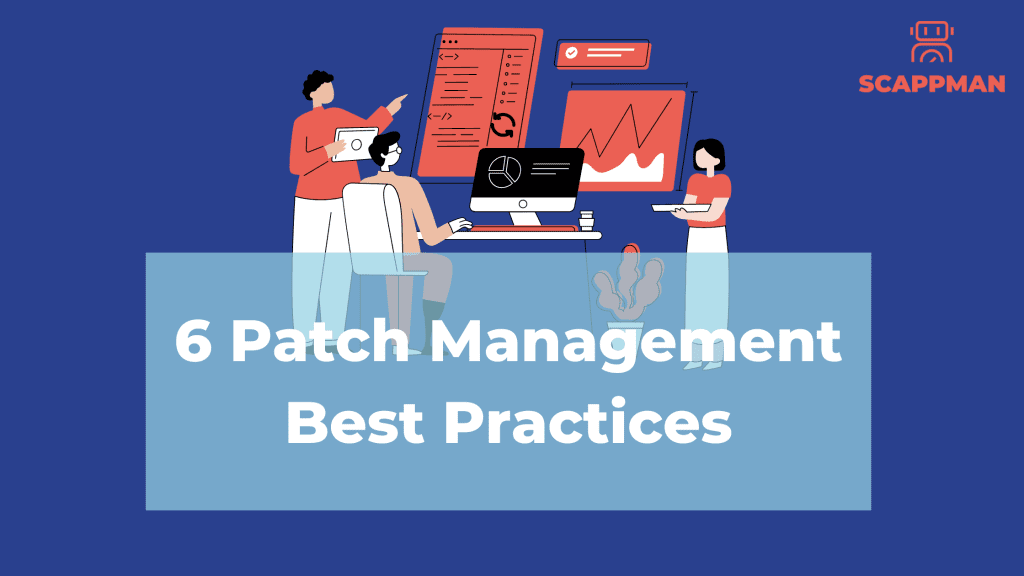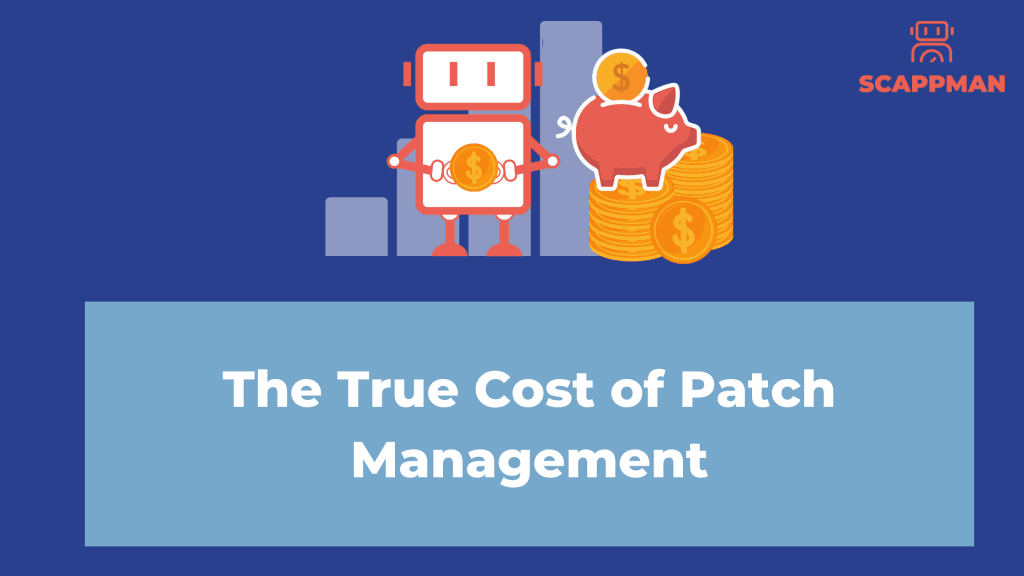5 Reasons Why You Should Switch to Microsoft Intune

Intune is a cloud-based mobile device management and mobile application management service from Microsoft. The majority of companies are using SCCM for managing their mobile devices, but everything is changing. Based on Microsoft data, the percentage of the Windows devices managed by Intune is constantly growing. And by the end of 2022, Microsoft is forecasting that 50 per cent of Windows 10 devices will be managed from the Cloud. So, if you’re thinking to migrate to Intune, this blog is useful because we’re going to cover 5 main reasons why you should switch to Microsoft Intune. 1. Intune supports all OSs Despite Intune is a Microsoft product, you aren’t restricted only to Windows OS. Unlike Config Mgr, Intune supports all operating systems, including macOS, iOS, Android and… Linux! Microsoft promised to add Linux support to Intune in 2022. They plan to start with Ubuntu and to provide support for CentOS, Fedora and Redhat. Linux support means that now all endpoints can be controlled and managed in one cloud-based MDM system and enables organizations to apply policies and device configurations in the same way for all supported platforms. 2. The best security management With Microsoft Intune, you can implement full control over all endpoints in your company. The more control you have, the easier it is to secure them. With Intune, you can set up device a compliance policy that will automatically block devices that don’t meet your organization’s security requirements. You can also create app protection policies that offer an extra layer of protection, securing access on personal devices, and isolating company data from personal data. 3. Everything is on the Cloud As Intune is a cloud-based MDM and MAM solution, you don’t have to set up and maintain on-premises servers. Everything can be done from the Cloud! 4. Improved IT experience Microsoft Intune does a lot to make the life of your IT department much easier. For example, because of the flexibility of application installation settings you can assign it to users/groups that need this application – no need to deal with one individual endpoint at a time. With Intune, you can also track licensing, and collect information about hardware configurations as well as software installations. Migration to Intune will allow your IT department to work with greater efficiency. 5. Automated application management with Scappman Even though it is easy to manage applications in Intune, keeping applications across all enrolled devices up to date is a difficult and time-consuming task because you must track all applications for available updates, test the update, if there are no bugs, package it, upload the app to Intune and deploy it to selected users or groups. Read more about how to manage applications in Intune in our blog here. With Scappman you will forget about packaging! Scappman is a 100% cloud solution that automatically installs all the necessary updates for your applications. Scappman automates the entire process of uploading the application and updating it in the Microsoft Intune environment. There are more than 500 third-party applications in Scappman App Store, that are always up to date and secure to use. Want to migrate to Microsoft Intune? This blog series about how to get started with Intune may be useful.
Microsoft releases a New Defender Vulnerability Management tool

Vulnerability management is an important part of any organization’s cybersecurity strategy. It helps to identify, assess, and mitigate risks associated with vulnerabilities in software and hardware. Microsoft has a comprehensive vulnerability management solution that helps companies protect against a variety of threats. Threat & Vulnerability Management (TVM) is a built-in capability in Microsoft Defender that follows a risk-based approach to discover, prioritize, and remediate endpoint vulnerabilities and misconfigurations. Microsoft has been working on improving their vulnerability management system for years now and recently they released a new Vulnerability management solution for a public review. Microsoft Defender Vulnerability Management: overview Microsoft has announced a public review of Microsoft Defender Vulnerability Management service, a single solution that offers the full set of Microsoft’s vulnerability management capabilities to help companies mitigate vulnerabilities more easily. The core version of Vulnerability Management tools was released in 2019 as Threat and Vulnerability Management – a built-in capability in Microsoft Defender Advanced Threat Protection. Since then, Microsoft has been constantly working on the tool to provide even better experience in monitoring, managing and mitigating vulnerabilities. Read more about Microsoft TVM and its functionality in our blog Detecting vulnerable applications with Microsoft Threat and Vulnerability Management. Besides all the existing threat & vulnerability management functionality currently available, a new service will provide asset inventories, smart assessment, and built-in remediation tools for Windows, macOS, Linux, Android, iOS, and network devices. Defender Vulnerability Management service will also include more advanced capabilities: Microsoft Defender Vulnerability Management will be available in public preview as a standalone and as an add-on for Microsoft Defender for Endpoint Plan 2 customers. Companies wanting to try the public previews of Microsoft Defender Vulnerability Management -both as a “standalone” service and as an add-on to Microsoft Defender for Endpoint Plan 2 – must request the free 120-day public preview here. Security baseline assessment With the new release, you will be able to continuously monitor the security posture of your endpoints and measure and compare risk compliance with industry benchmarks – CIS and STIG in real-time. Additional benchmarks will be available soon. To use this functionality, you must create a Baseline profile. Go to Vulnerability management > Baselines assessment. Select the Profiles tab at the top, then select the Create profile button. Enter a name and description for your security baselines profile and select Next. On the Baseline profile scope page set the profile settings such as software, base benchmark (CIS or STIG), and the compliance level and select Next. Finally, select the configurations you want to include in the profile. Browser extension inventory From now on you can monitor web browser extensions installed on your endpoints. Defender Vulnerability Management provides detailed information on the risk level of the installed browser extensions, so you can make informed decisions on managing extensions in the organization’s environment. Digital certificate inventory Digital certificates help provide privacy, security, and authentication to transfer data within your network and over the Internet. Expired certificates could expose vulnerabilities within your company, disrupt service, or cause downtimes. The certificate inventory makes it easy to manage certificates from one place. You can: To view your certificates, go to Vulnerability management > Software inventory and select the Certificates tab. Network shares analysis Companies use internal network shares to send data and to provide access to files and documents. To prevent attackers from stealing data from your organization Microsoft created new configuration assessments that identify the common weaknesses that expose your endpoints to attack vectors in Windows network shares. The following recommendations will be available as part of the new assessments:
6 Patch Management best practices

Protecting your company’s IT infrastructure against cybersecurity threats is the number one priority. And patch management is an essential element in the cybersecurity strategy. We know that implementing patches for software including third-party applications can be tedious. Indeed, due to time and budget limitations, most IT departments don’t pay much attention to patch management. Knowing that 57% of data breaches could have been prevented by being patched on time, patch management is more critical than ever. With patch management, you ensure that your applications stay up to date and secure to use. So, implementing software patches as they’re released is the best way to keep your company’s software safe from hackers. In this blog, we’ll share 6 patch management best practices. Create a patch management policy Implementing patch management policies helps establish routines, procedures, and timeframes for effective patching. The process of creating the policy can be time-consuming but necessary. In the patch policy, you create, you should include all kinds of updates (critical and non-critical), as well as regular system maintenance. Inventory list of your software A list of all software, operating systems and devices the company uses is a vital piece of your patch management process. If you have a clear overview of all your endpoints and software installed, you know what you have to protect. While Windows can automatically update itself, third-party apps like 7-zip, Adobe and Chrome might not have this ability. This creates multiple attack vectors into your endpoints. Categorize risks Avoid applying patches in a chaotic way. Categorize the detected vulnerabilities according to the risk level and prioritize the deployment of important patches instead. Applying patches to low-level threats first wastes time and threatens your system security. Prioritizing CVEs helps define which systems and applications require immediate patch deployment and which can wait. Pro Tip: Microsoft Threat and Vulnerability Management (TVM) helps organizations with identifying, assessing, and even remediating new vulnerabilities. The add-on tool to Microsoft 365 Defender provides users with insights on all applications (that are supported by Microsoft) installed across all the endpoints in the company, including the application name, OS, vendor, number of associated weaknesses, threats, number of exposed devices and impact. All the detected vulnerabilities are categorized based on the CVSS score. Read more about Microsoft TVM: Detecting vulnerable applications with Microsoft Threat and Vulnerability Management Microsoft releases a New Defender Vulnerability Management tool Monitor patch updates With so many applications installed (and so little time), tracking all software updates is critical. In the case of Microsoft products, it’s easy – on Patch Tuesday the second Tuesday of each month, Microsoft releases large patches for Windows OS, Microsoft Office and other Microsoft software. But for third-party apps – not so much. Some software vendors publish updates and send email notifications to administrators. Pro Tip: Scanning through hundreds or thousands of software patches can be inefficient and time-consuming. Use solutions for automated application patching to save your time. Test patches before deployment Before deploying a patch, it’s important to test it in a testing environment. This allows you to verify that the patch does what it is supposed to do and doesn’t break anything else. It also gives you time to fix any problems that may arise before the patch goes live. Automation Let’s be honest, it’s not possible to do patch management manually. On average, organizations use around 100 applications, and you must monitor and patch all of them. But you have other stuff to do. The solution is pretty – automate everything that can be automated. Automating the patching process reduces the workload for IT admins thus promoting efficiency, productivity, and security of the organization. That’s why Scappman should be a part of your patch management policy. Automatically updating all your applications, you save plenty of time that you can spend on other important tasks. You don’t need to track all the updates available, prioritize and test them. Scappman will do this job for you. To know more about how you can automate third patching, start a free trial or book a call with us.
The True Cost of Patch Management

The connection between return on investment (ROI) and patch management may not be obvious. After all, patch management does not generate revenue for the company. Nevertheless, while this may be true, preventing losses certainly affects the company’s financial results. In other words, patch management helps you save money by reducing IT expenditures in long run. So, how much does patching your software save your company? It depends on a lot of factors: the number of applications you manage, the time required to patch, and how much stuff is involved in patch management, how often patches are released. Every unpatched application can profoundly cost the company- the average cost of a cyber attack is $1.1 million. In this post, we share the main factors, that affect patch management costs, and why you need automated patching solutions. What is patch management? Patch management is the process of managing patches or updates to software and firmware. It’s important because it keeps the software up-to-date and secure, closing known vulnerabilities. Patch management also minimizes disruptions to users by deploying patches in a timely manner. The goal of patch management is to keep systems operational and secure with minimal impact on the user. Patch management is an important part of IT security and should be included in any organization’s overall security strategy. By keeping software up-to-date, organizations can reduce their risk of being attacked by cybercriminals. Why do you need patch management? According to a study conducted by Ponemon Institute for ServiceNow: 60% of cyberattacks are caused because applications are not up to date 62% of the companies were unaware that they were vulnerable prior to the data breach 52% of respondents said their organizations are at a disadvantage in responding to vulnerabilities because they use manual processes. Despite that most IT departments still don’t pay much attention to patch management because they find patching complex and time-consuming. Indeed, patching is an infinite process: IT departments must continually identify and assess vulnerabilities, monitor and test patches, and deploy the patches to their systems. Factors you should consider when calculating patch management costs There is no universal answer to how much patch management costs. However, there are some factors that should be taken into consideration when making calculations: human resources cost (HR), frequency of patching (PF), time (T), scope (S). Mathematically, the formula for patch management costs calculation can be expressed as: Total costs = f (T, HR, S, PF). This model is way far from precise but it can be a starting point for identifying the patch management costs. Time (T) IT departments spend a lot of time on patch management. According to the Ivanty survey results, IT & security professionals spend 53% of their working time each month detecting and prioritizing vulnerabilities and 19% testing patches. Human resources (HR) Hiring certified cybersecurity experts and IT managers is essential in today’s business environment because such professionals manage IT infrastructure in an efficient way, protecting organizations from new security threats. However, as the number of cyberattacks has exponentiated, so has the demand for certified cybersecurity experts, which are few. The recruiting costs are tremendously high. Scope On average, a company uses around 110 applications. It means, that IT specialists must monitor 110 applications for the updates and patch them. Patch frequency Many people think that application updates are released according to some sort of schedule, like Patch Tuesday for Microsoft software. However, it’s not like that in most cases – there is no system. And let’s consider this: for example, Chrome releases a full OS update about every 4 weeks. Minor updates, such as security fixes and software updates, happen every 2–3 weeks. Only for patching Google Chrome, an IT specialist must go through the patch cycle 2-3 times a month. Cybersecurity costs Patch management is a process used to maintain system security by updating software and firmware on the devices. Patch management can be time-consuming, as patches must be evaluated for applicability and installed on systems. Additionally, patch management can result in an increase in system downtime. There are several true costs of patch management: threat response costs, system restoration costs, and downtime costs. Treat response costs Companies frequently choose a patch management strategy as a proactive means of preventing cyberattacks. Your IT department play catch-up with newly detected vulnerabilities: they spend most of their time (which costs a lot as we explained earlier) on detecting new patches, testing them to ensure they don’t break anything, pushing updates to the users etc. Restoration costs These are costs associated with reverting the system to the previous state to recover from the damage and other problems caused by unpatched security bugs. Downtime costs Downtime costs are often the most significant factor, and they can vary significantly depending on the organization’s size, industry, and other factors. A study by IDC found that the average cost of an hour of downtime for a company in the United States is $5,600. For a company with 1,000 employees, that would amount to more than $5 million per year. The cost of downtime can be even higher for industries such as healthcare or financial services. Why do you need automated patching? As we mentioned earlier, there is no exact time and date when vendors release patches, and it’s not possible to track all these updates manually. But leaving your systems unpatched can comprise your company. The only solution here is automated patching tools. Automated patching works by automatically scanning installed applications for new updates available. Updates and patches can then be set for automatic deployment, based on rules you establish. So, what does the best automated third-party patch management solution look like? Meet Scappman! Automated third-party patch management with Scappman Scappman is a 100%-cloud solution that automatically installs all the necessary updates for your applications. Scappman automates the whole process of uploading the application and updating it in Microsoft Intune environment. There are more than 500 third-party applications in Scappman App Store, that are always up to date and secure to


